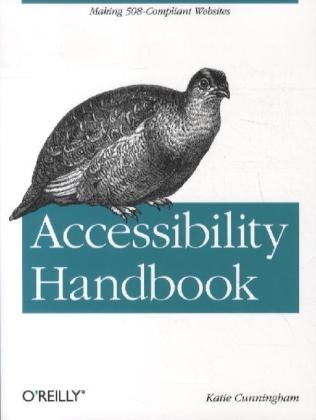Read more
Get practical guidelines for making your website accessible to people with disabilities. With this handbook, you'll learn how to design or develop a site that conforms to Section 508 of the US Rehabilitation Act - and in the process you'll discover how to provide a better user experience for everyone.
The Accessibility Handbook introduces you to several audiences that have difficulty using today's complex websites, including people with blindness, hearing loss, physical disabilities, and cognitive disorders. Learn how to support assistive technologies, and understand which fonts, colors, page layouts, and other design elements work best - without having to exclude advanced functions, hire outside help, or significantly increase overhead.
Develop solutions that accommodate: Complete blindness. Create a logical document flow to support screen readers Low vision and color blindness. Optimize images and color schemes, and ensure your site enlarges gracefully Hearing impairment. Provide video captions and visual alerts for interactive features Physical disabilities. Make forms, popups, and navigation easier to use Cognitive disorders. Adapt fonts and text styles for dyslexic users, and design consistent, well-organized pages for people with ADHD
List of contents
Preface
Chapter 1: Complete Blindness
Chapter 2: Visual Accessibility-Other Types
Chapter 3: Audio Accessibility
Chapter 4: Physical Accessibility
Chapter 5: Cognitive Disabilities
Chapter 6: Selling Accessibility
Chapter 7: Additional Resources
About the author
Katie Cunningham is a Python and Django developer for Cox Media Group. While she had always had an interest in programming, it didn t turn into a career until she started to work at NASA. There, she slowly transitioned from gathering requirements to developing full time, advocating the use of more open source in the government sector.
Summary
The 508 handbook is written for the developer or designer who wants to make accessible websites, but doesn't know where to begin.

